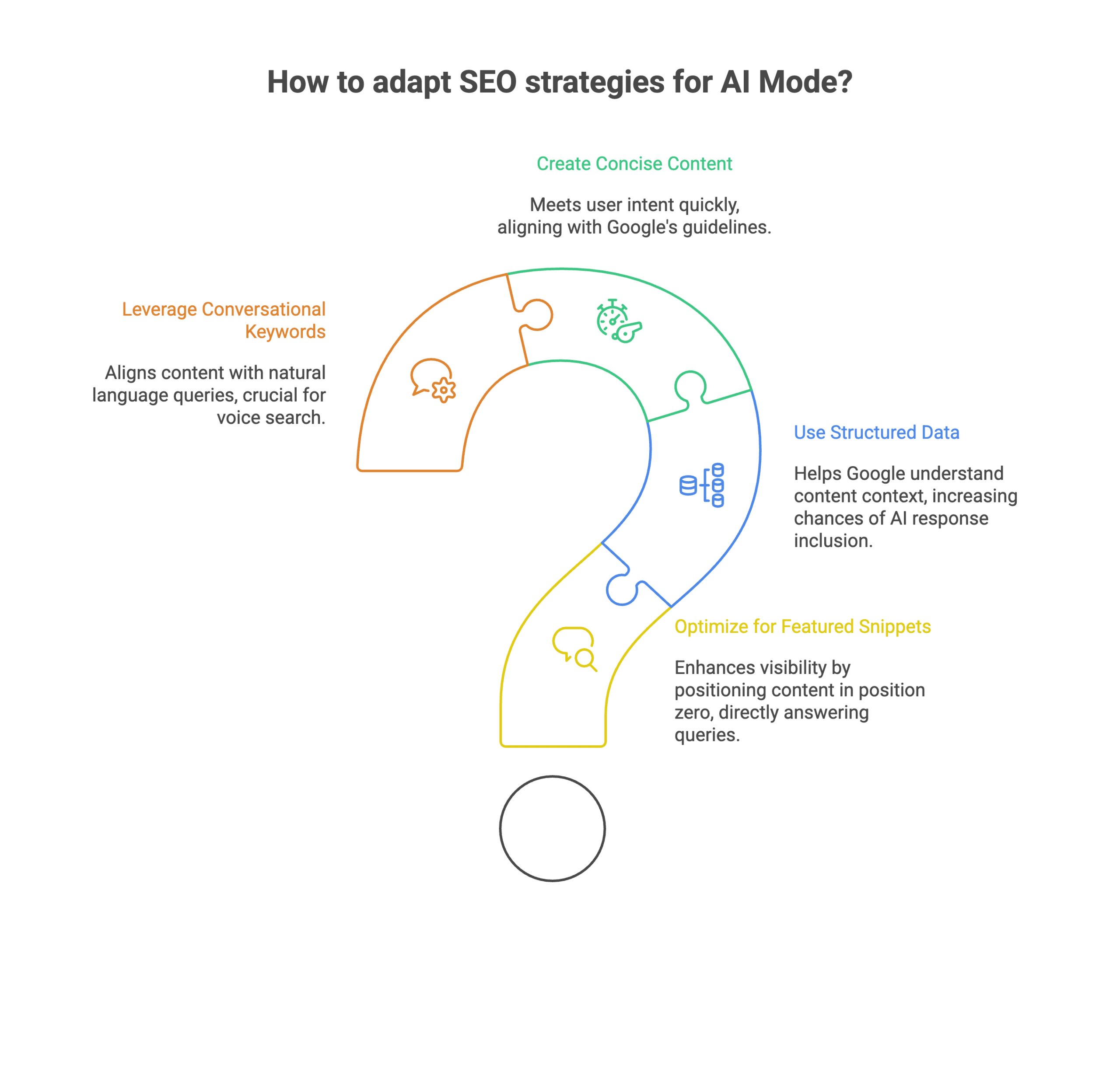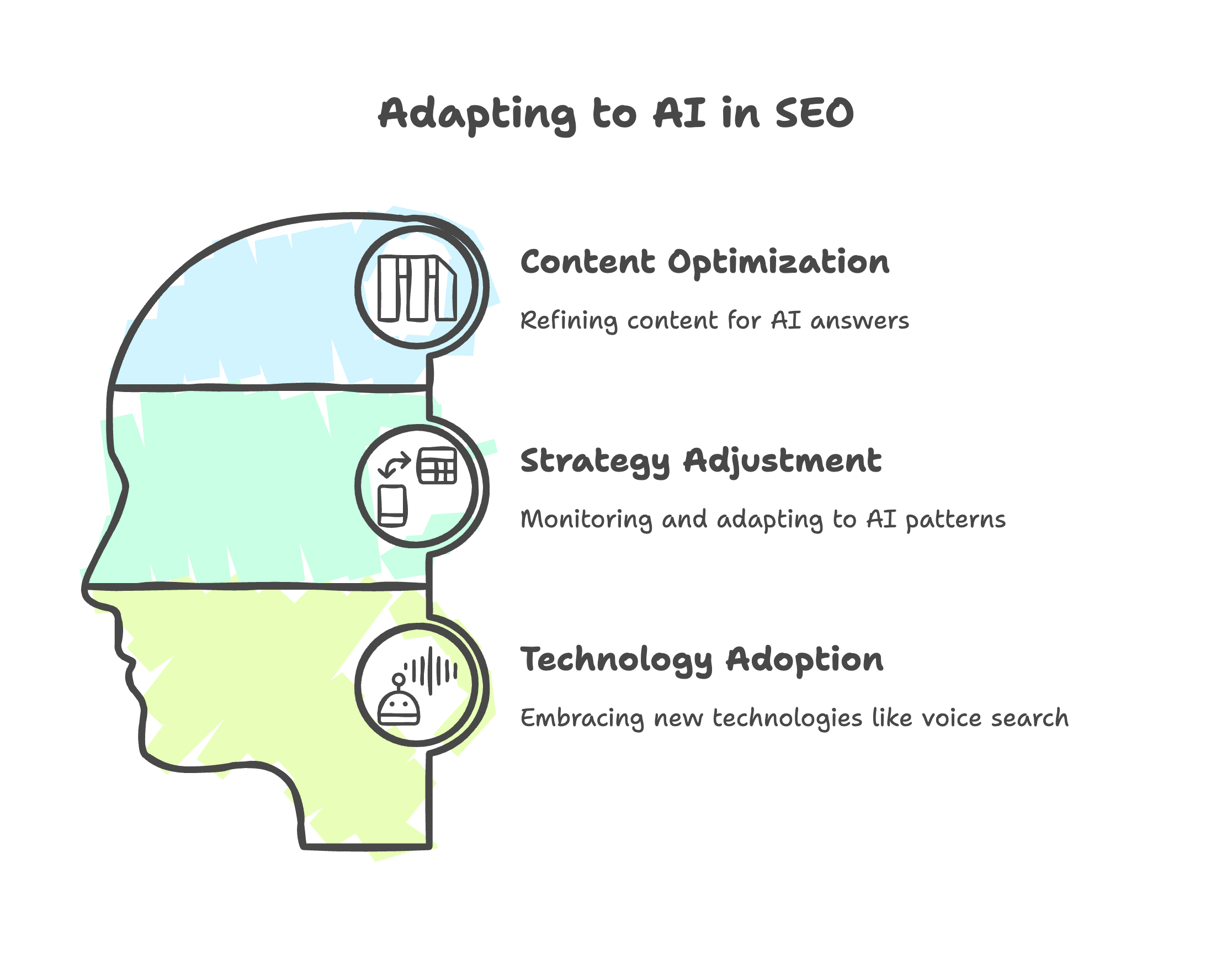How AI Mode is Changing SEO: The Decline of CTR and What It Means for Marketers in 2025
In 2025, Google introduced a significant shift in its search engine landscape with the launch of AI Mode, changing how results are presented to users. AI Mode has altered the traditional mechanics of search, placing less emphasis on click-through rates (CTR) and more on providing immediate, AI-generated responses directly within the search results. This development presents a unique challenge for marketers who have long relied on CTR as a primary metric to assess SEO success.
Historically, high CTR indicated high relevance, engagement, and successful optimization for targeted keywords. However, as AI Mode takes center stage, it’s clear that the importance of CTR is dwindling. In this article, we will dive into how AI Mode is reshaping SEO, why CTR is no longer a reliable metric, and what steps marketers can take to adapt to this new paradigm in search.
The Rise of Google’s AI Mode
Google’s AI Mode was officially introduced in May 2025, as a result of ongoing advancements in artificial intelligence. With AI Mode, Google aims to provide a more conversational and efficient user experience. Rather than simply listing links for users to click on, Google now delivers AI-generated summaries or answers right at the top of the search results. This shift drastically reduces the need for users to visit external websites for answers.
According to Google’s official announcement, AI Mode is designed to answer user queries in a more context-aware manner, drawing from a variety of data sources and presenting a synthesized response. The goal is to make information retrieval faster, more accurate, and more intuitive. As a result, AI-driven search results dominate, displacing organic listings and causing CTR to plummet for many websites.
Example: A search for “current stock market news” may now provide a concise, AI-generated news summary directly in the search results, leaving users with little reason to click on a link to an external site. This change has profound implications for marketers who rely on ranking high to attract traffic.
Traditional Click-Through Rates (CTR): A Thing of the Past?
For years, CTR has been one of the most reliable metrics to determine how well a website performs in search rankings. A higher CTR indicated that a site’s content was relevant and engaging, often correlating with higher conversions and revenue. Marketers meticulously crafted meta descriptions, titles, and snippets with one goal: to boost CTR.
However, with the implementation of AI Mode, the value of CTR is diminishing. AI-generated answers now take the prime real estate at the top of the SERPs, pushing traditional organic listings further down. As Google provides more direct answers, it becomes less necessary for users to click on links.
Google’s official 2025 report highlighted that zero-click searches now account for more than 50% of search queries. This trend is expected to grow as AI-powered search results continue to evolve.
Consider a search for “how to improve website SEO.” Instead of clicking on multiple pages, users are now presented with a direct answer featuring a list of recommended SEO practices, reducing their need to visit any specific website for more information.
How AI Mode Affects SEO Traffic and User Behavior
The shift towards AI-driven search results is fundamentally altering how users interact with Google. With answers provided instantly within the search interface, users are increasingly bypassing websites altogether. The introduction of zero-click searches means that organic traffic is being redistributed, with fewer clicks directed to websites.
According to a study by BrightEdge, zero-click searches accounted for over 50% of search queries in 2025, significantly impacting CTR and organic traffic. The study further indicates that AI-driven search results dominate the first fold of the SERPs, leaving organic listings pushed lower, where they receive less visibility.
If a user searches for “best car insurance policies,” they may receive an AI-generated list of the top options with ratings, prices, and coverage summaries. Since the answer is provided directly in the search results, there’s no need for users to click on a website to get the information they need.
This means that the future of SEO must adapt to AI-driven search behaviors by providing highly optimized content that Google’s AI can use directly in search responses.
Adapting to AI Mode: New SEO Strategies

To remain competitive in the evolving world of AI Mode, marketers must adopt new strategies that focus on improving visibility in AI-generated results. Below are key strategies to consider:
-
Optimize for Featured Snippets: Featured snippets are now crucial, as Google’s AI often pulls data directly from them to create AI-generated answers. Aim to position your content in position zero by answering common queries directly in your content.
-
Use Structured Data: Implementing schema markup (structured data) is critical. By marking up your content with structured data, you help Google understand the context of your content, making it more likely to be featured in AI responses.
-
Create Concise, Answer-Driven Content: Craft content that directly addresses user queries with clarity and brevity. Google’s Search Quality Evaluator Guidelines emphasize content that demonstrates expertise and satisfies user intent quickly.
-
Leverage Conversational Keywords: With the rise of voice search and natural language processing, optimizing for conversational keywords and long-tail phrases is crucial. AI Mode thrives on understanding and responding to natural language queries, so align your content accordingly.
The Future of SEO and AI Mode
Looking ahead, AI Mode will only become more integrated into the search experience. Google is continuously refining its algorithms to prioritize content that not only answers user queries but also aligns with the needs of AI-driven search. As AI continues to shape the future of search, SEO professionals must evolve their strategies to stay relevant.
To succeed in this new era, SEO professionals will need to:
-
Continuously optimize content for AI-powered answers.
-
Monitor shifts in AI search patterns and adjust strategies accordingly.
-
Embrace new technologies such as voice search and conversational AI.

As Google’s AI evolves, the focus will increasingly shift from ranking based on keywords alone to providing answers that directly meet user intent. Marketers who can adapt to this shift will be well-positioned for success in the coming years.
AI Mode has undoubtedly changed the SEO landscape in 2025, making CTR less important and AI-driven responses more crucial. While traditional SEO tactics have their place, adapting to AI Mode requires new strategies, such as optimizing for featured snippets, using structured data, and creating concise content. As AI continues to shape search behavior, staying ahead of the curve will be critical for maintaining visibility and driving traffic.
Is your website ready for AI mode? Start optimizing for featured snippets and structured data today to ensure your content is ready for the future of SEO.
